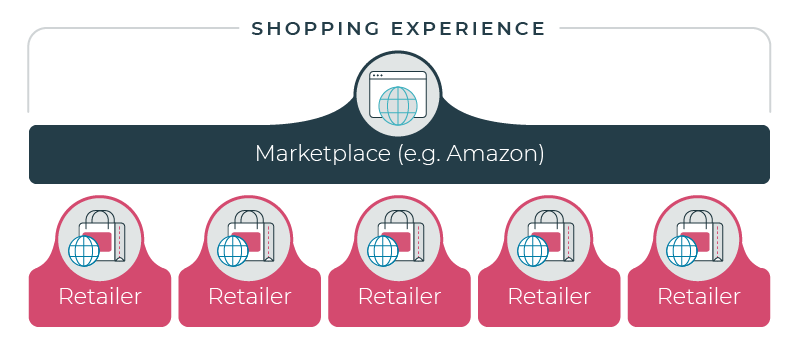How the online shop became a vending machine
How the online shop became a vending machine
(and why it isn’t working)
While social media has been optimised to keep us doom scrolling, online shops have been optimised to get us to a speedy checkout.
Shoppers today are often missing the human, emotional experience of shopping — a gap that social media is happy to fill.
In the race for efficiency, online shops have been reduced to vending machines, unintentionally removing the possibility for consumers to connect with their brand. For this, they now have to turn to social media platforms.
In this series, we’ll explore the lost relationship between shops and their customers and how this can be restored in what I would like to call an ‘augmented society’. It’s time for brands to rethink online shopping. There’s an opportunity for shops and consumers alike to shape better shopping experiences.
Augmented Society Series, Part 1
Why do we shop online? Different people have different reasons, but in the end, it typically comes down to convenience. Whether it is fast and free delivery, user reviews or easy checkouts, an agile and frictionless experience is what people are looking for. As a result, shops have been trying to remove any kind of friction that stands between the shopper entering the site and hitting the buy button. All good, one might think — shoppers know what they want (convenience), and online shops cater to their needs.
However, convenience comes at a cost. It’s no news that most smaller online stores struggle to compete. Setting up shop might be cheap and easy, but acquiring customers and satisfying high expectations of free deliveries and returns makes running an online shop expensive. That’s why many businesses turn to big marketplace platforms like Amazon, that take a big cut from their margins. These platforms have raised the expectations of all consumers to a level that almost no other shop can adhere to without losing money. The marketplaces themselves take minimum margins, but with deep pockets and alternative revenue streams, they don’t even need to.

As shops have been consumed with creating a frictionless experience, they’ve lost the ability to connect with their customers. Shopping is more than adding a product to a cart and proceeding to the checkout. It’s a social and emotional experience, of course in some categories more than others. Yet this is something that seems to be forgotten. Take away the design, and every online shop looks basically the same. This doesn’t mean, however, that the online shopping experience doesn’t exist, — just that it has shifted. Customers still seek engagement and information when they are looking to buy something, but they often need to look elsewhere for inspiration and discovering new products. And that’s where social media comes in.
The social side of shopping
Rather than focusing on a call to action (like online shops), social media is all about engagement. And with success; in 2022, people spent an average of 2.5 hours on social media every day! This is of course no coincidence, as these platforms are designed to hold our attention for as long as possible.
The relationship between both strategies — shops optimising for efficiency and social media for engagement — is often overlooked. On the one hand, people are rushed through the shopping experience under the guise of convenience and making the sale. On the other hand, people are persuaded to spend all their time on social media. This has created a toxic synergy between ecommerce and social media. A synergy however, that’s mainly positive for the social media platforms.
By focusing on a frictionless experience, online shops have reduced themselves to vending machines: you throw in a coin, select your product and leave (to continue doom scrolling on social media). This in return offered a great opportunity for social media platforms to capture an important part of the shopping experience, even though they don’t sell products themselves.
Because now, shops not only depend on social media for showing ads, the whole customer relationship happens on these platforms.
So, no matter if you sell on Amazon or through your own online store, the shopping experience takes place on a different platform.

Let’s recap:
- Online shops have been designed for efficiency: a quick add-to-cart and checkout.
- Social media have been designed for engagement: to keep their users’ attention.
- As a result, brands now have to rely on social media for their shopping experience.
In my next piece, I’ll reflect on how this lost connection is affecting the places we live and how in the augmented society, retailers and consumers can take back control over the shopping experience. Stay tuned!











